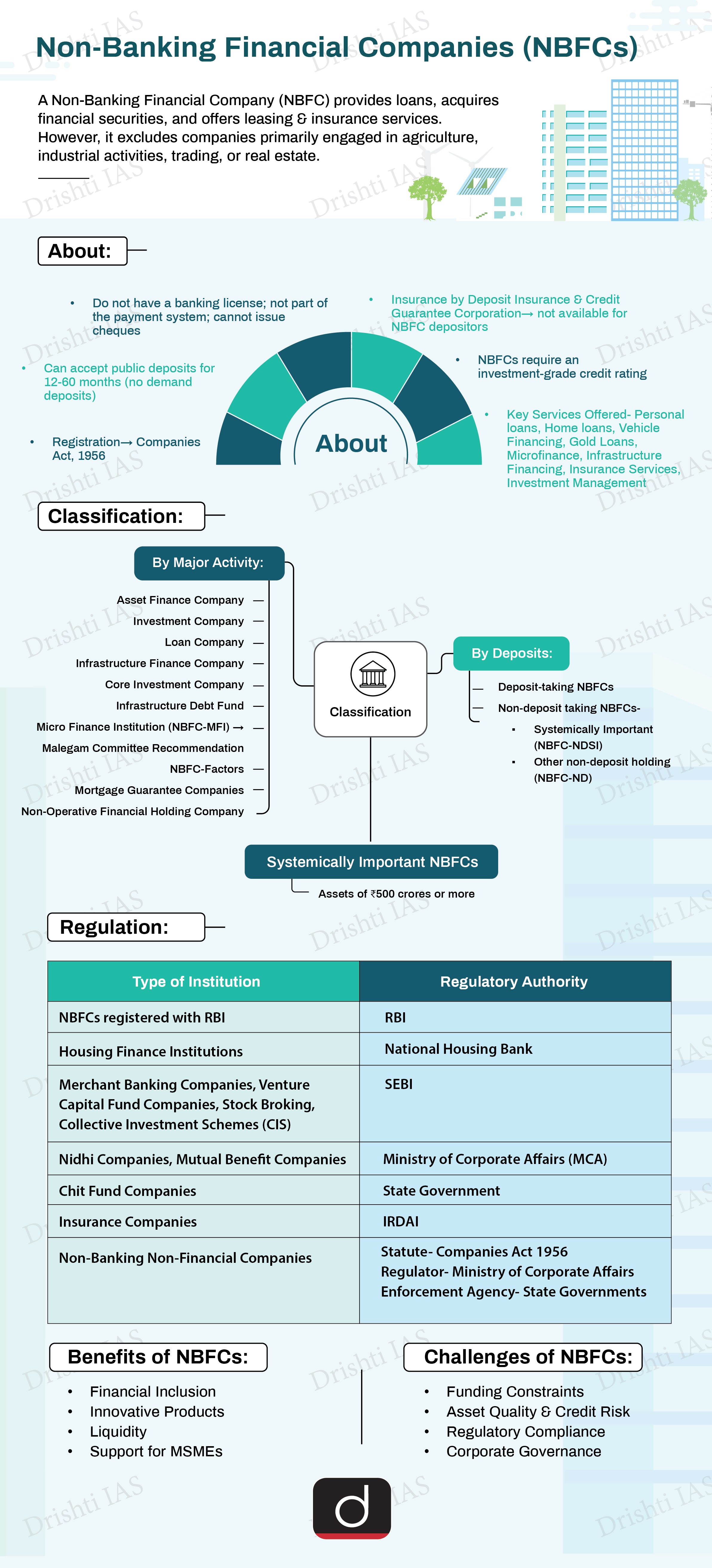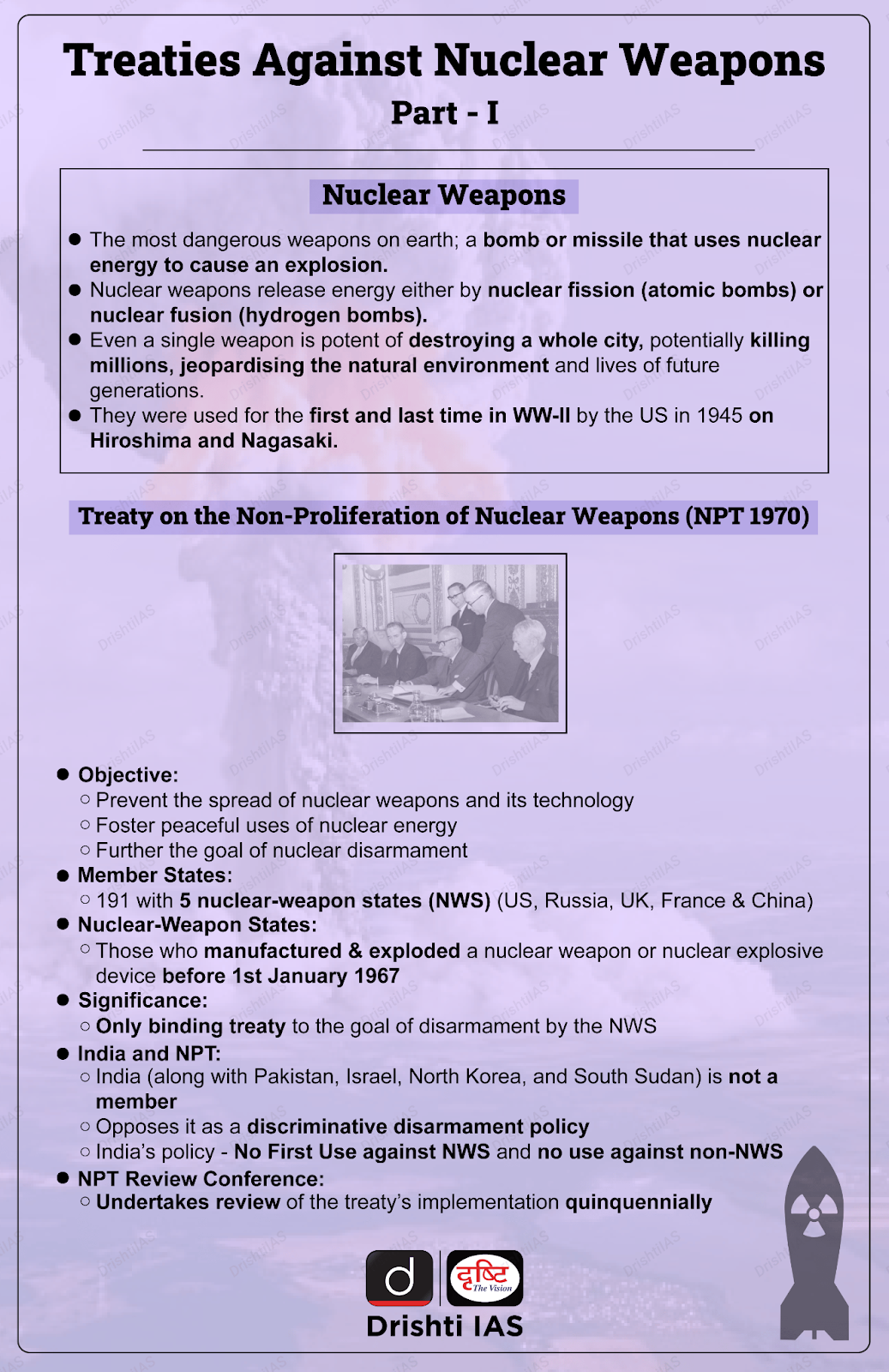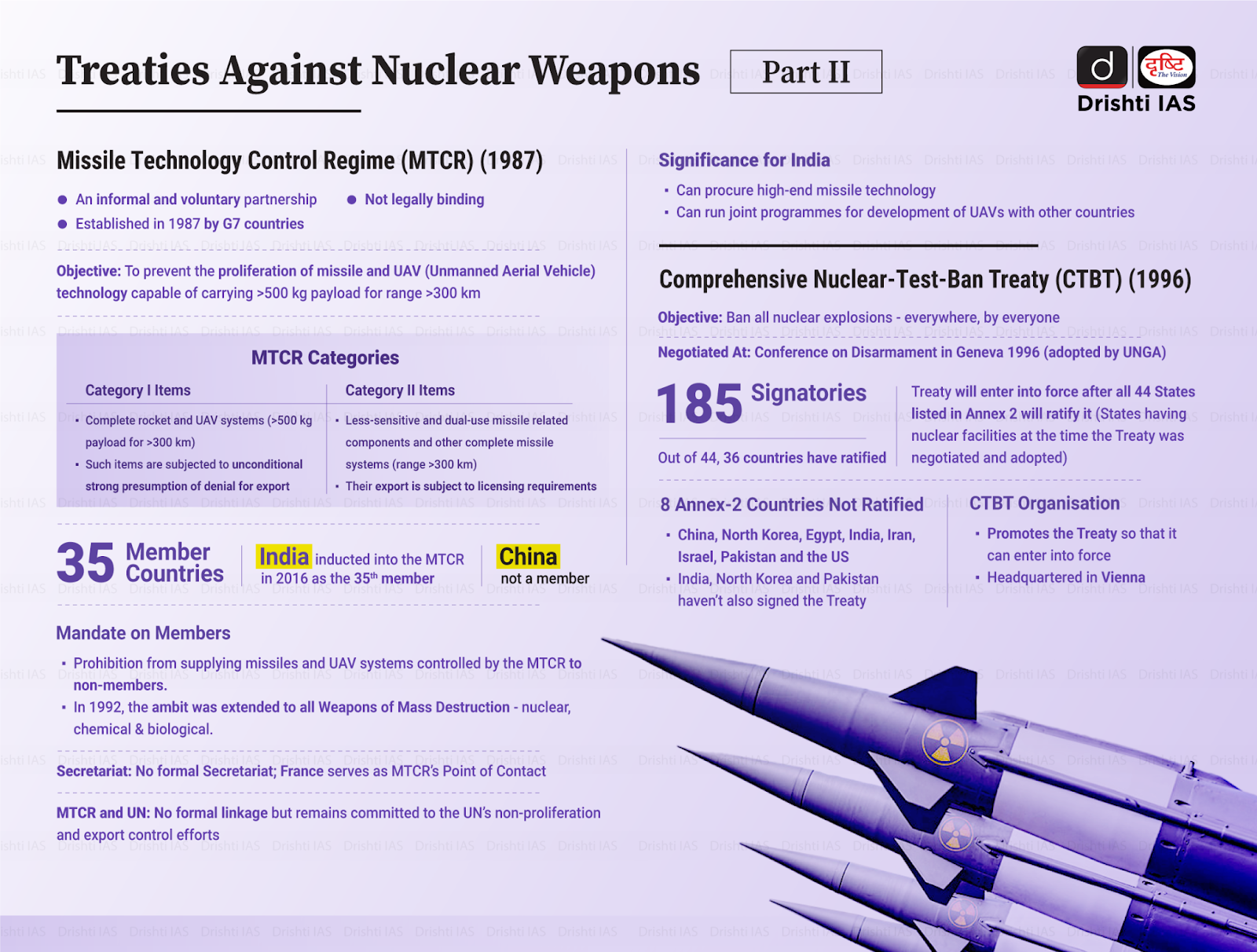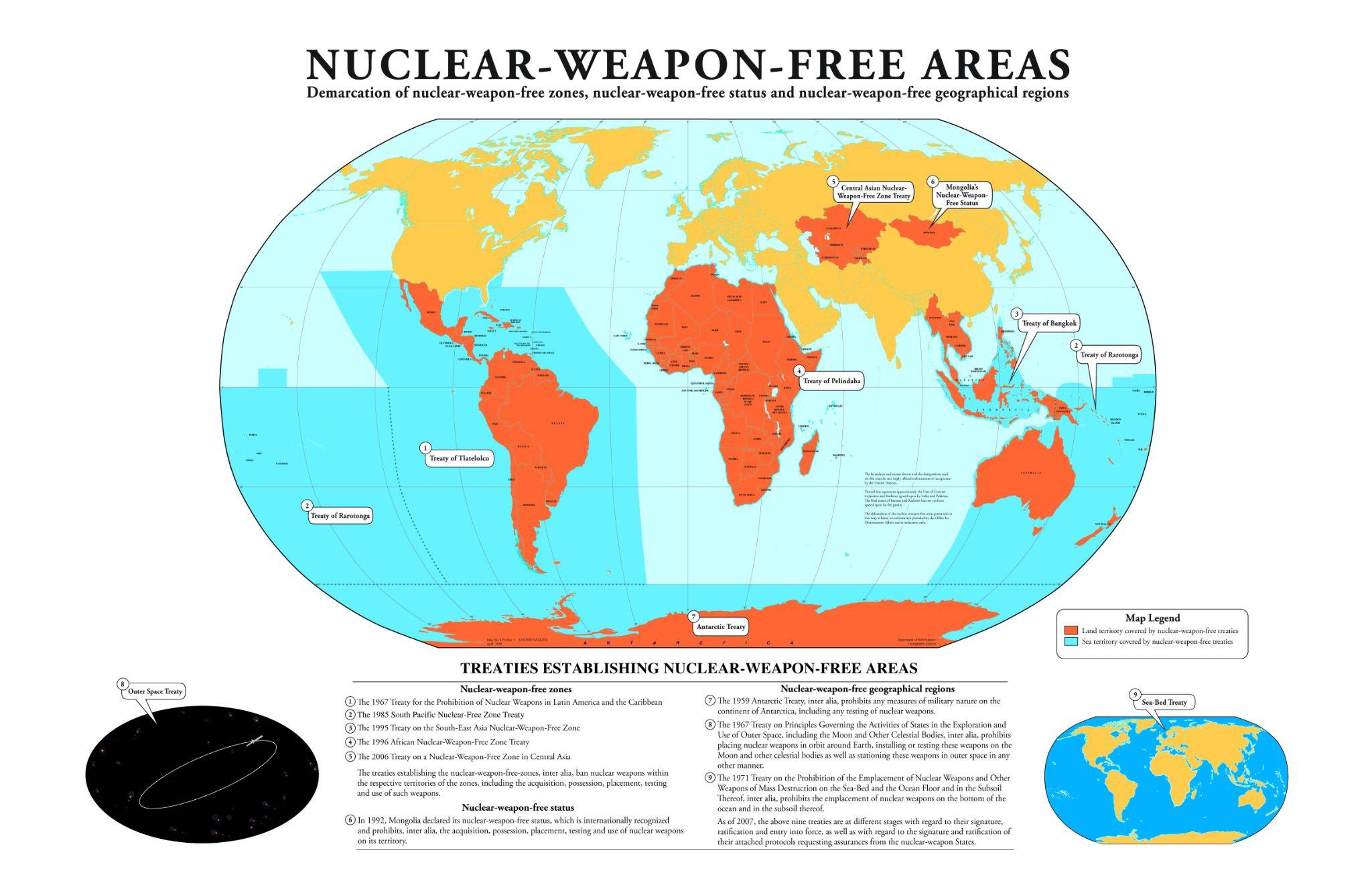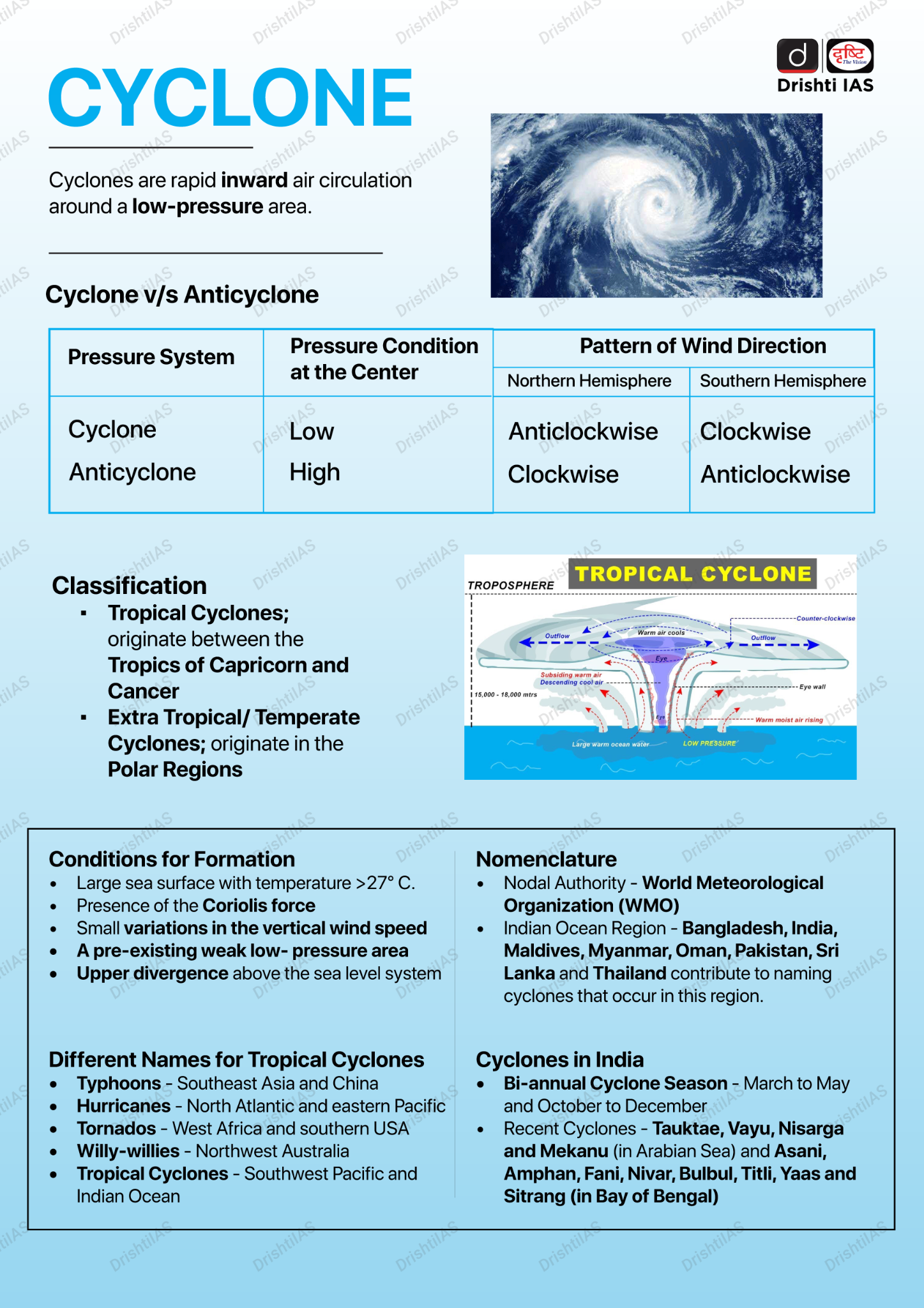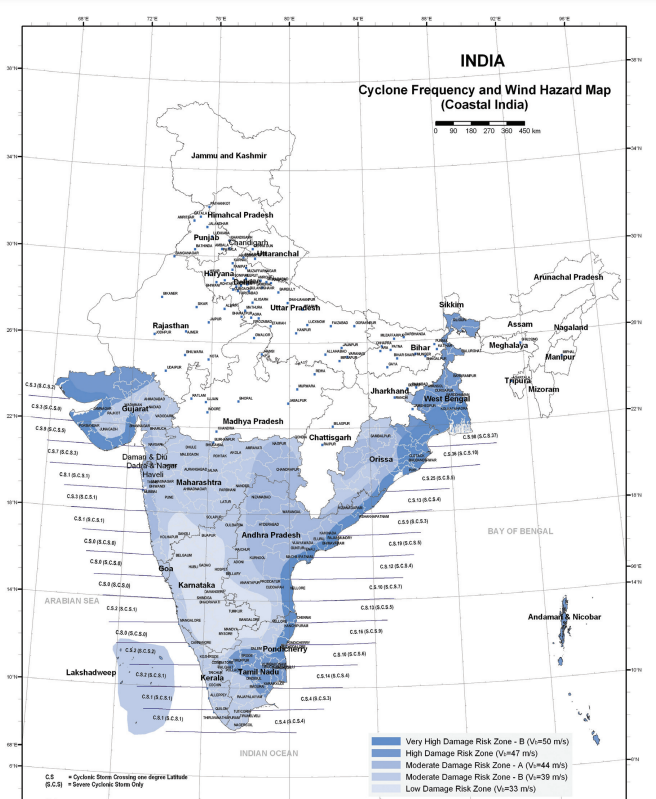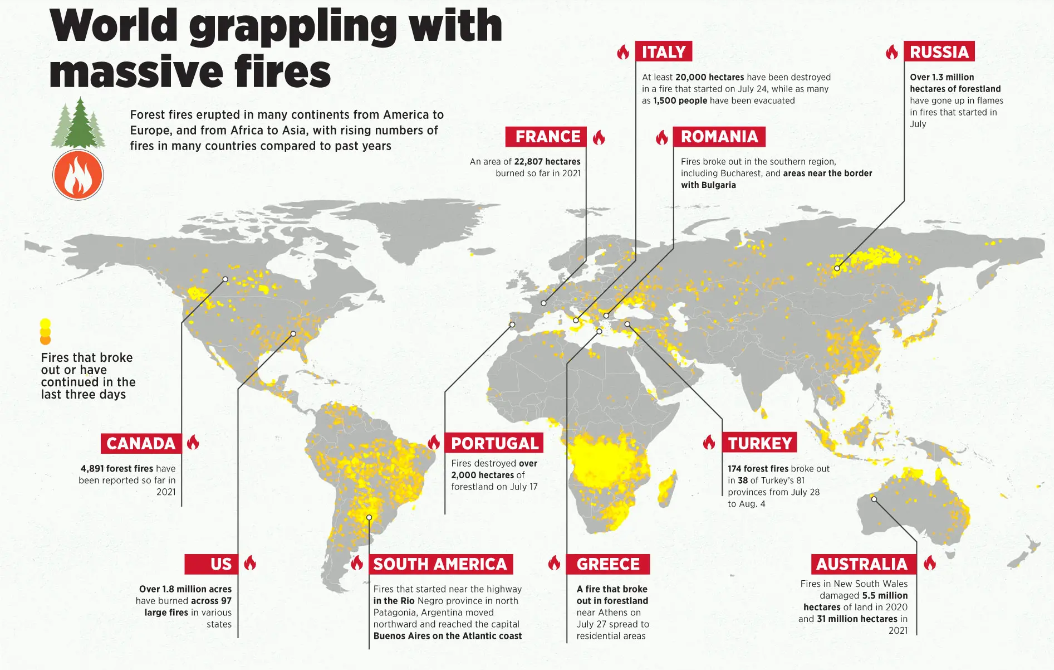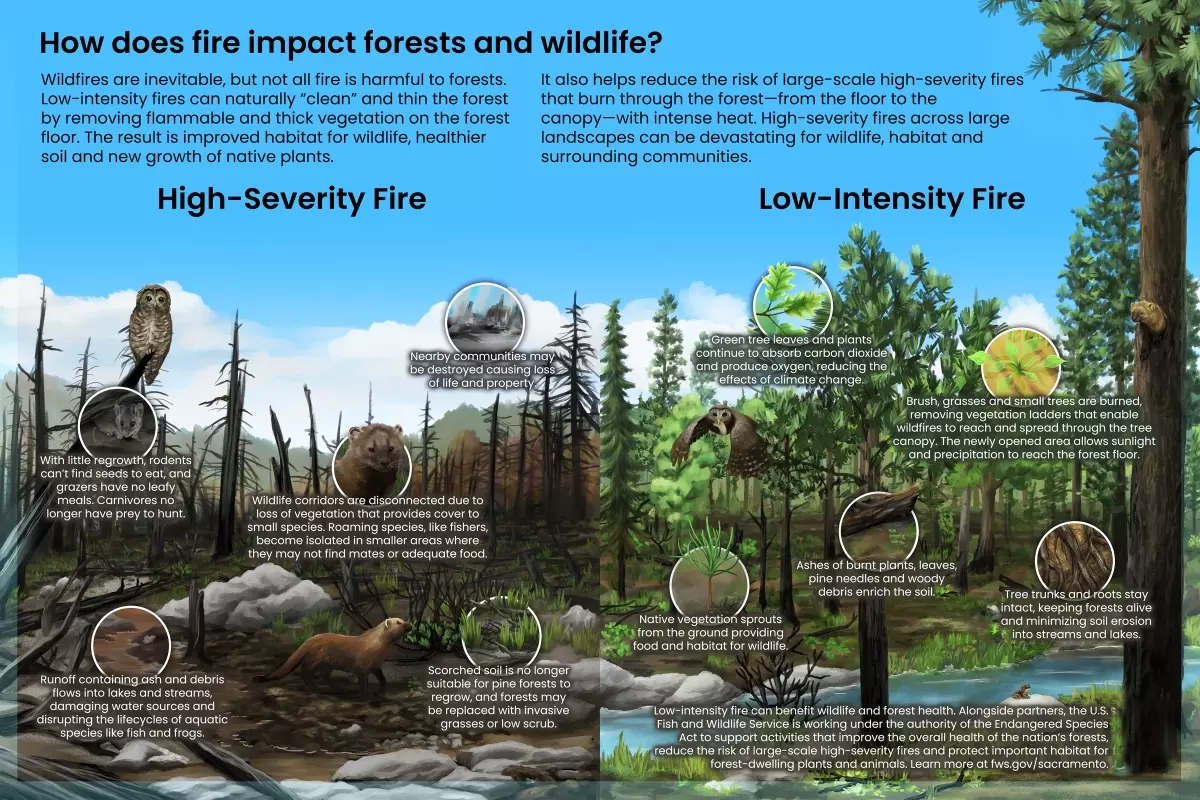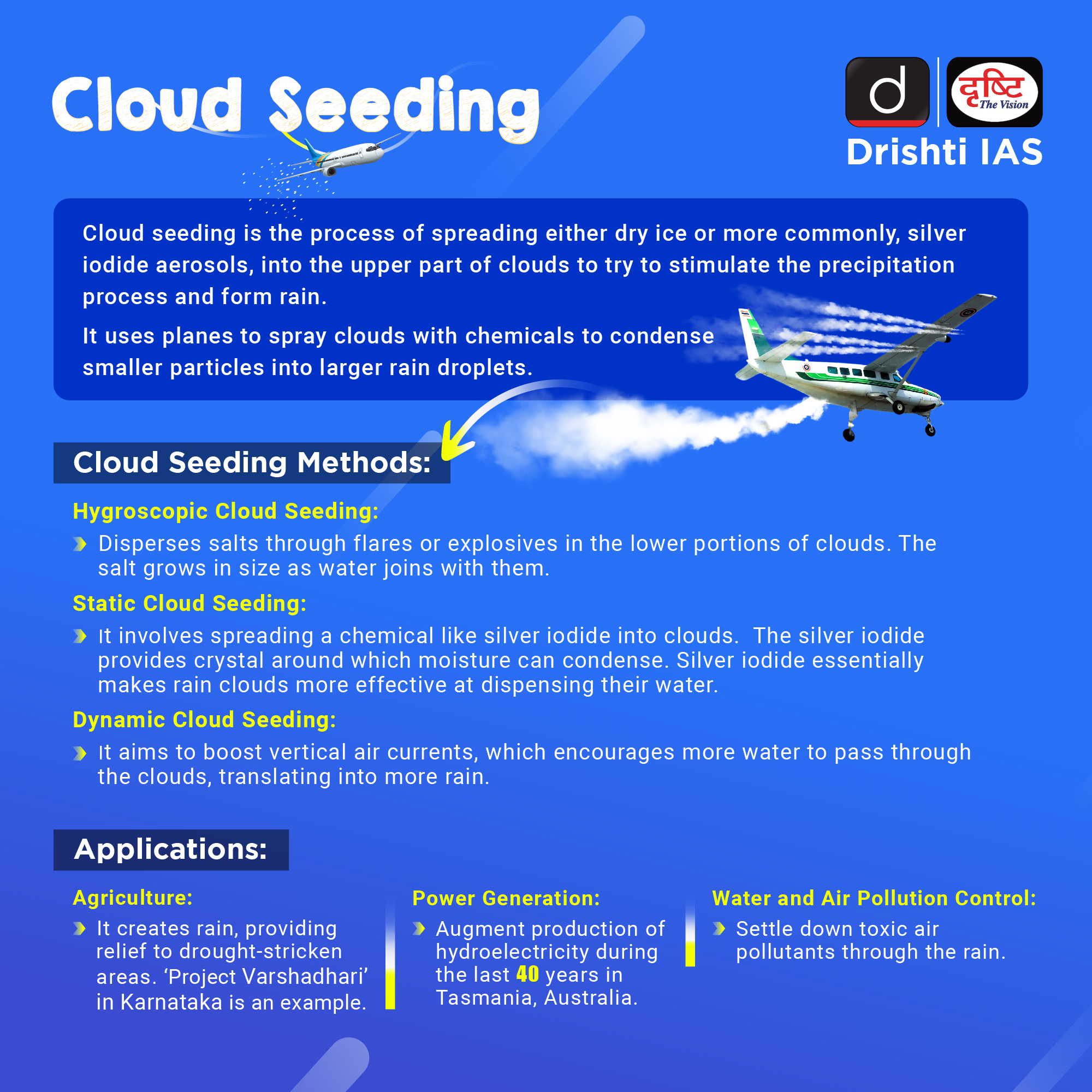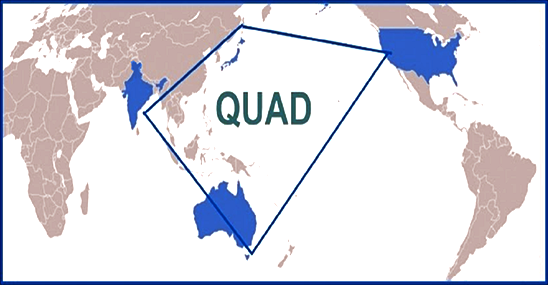Nuclear Disarmament
For Prelims: Nobel Peace Prize 2024, Non-Proliferation of Nuclear Weapons (NPT), Comprehensive Nuclear-Test-Ban Treaty (CTBT), International Day for the Total Elimination of Nuclear Weapons, Treaty on the Prohibition of Nuclear Weapons (TPNW)
For Mains: Nuclear Disarmament: Need, Frameworks, Challenges & Way Forward.
Why in News?
The Nobel Peace Prize 2024 was awarded to Nihon Hidankyo, an organisation representing Japanese atomic bomb survivors, in recognition of its dedicated efforts to achieve a nuclear-free world.
- This award emphasises the critical importance of advocacy for nuclear disarmament, which is deeply rooted in the catastrophic impacts of nuclear weapons experienced during the bombings of Hiroshima and Nagasaki.
Modern Threat of Nuclear Weapons
- The Hiroshima bomb had a yield of 15 kilotons (Kt), while modern weapons, such as the Tsar Bomba tested by Russia in 1961, can reach 50 megatonnes (Mt), making them over 3,800 times more powerful.
- Modern nuclear arsenals include not only large-scale strategic warheads but also tactical weapons designed for battlefield use, increasing the risk of nuclear conflict.
What is Nuclear Disarmament?
- About:
- Nuclear disarmament refers to the process of reducing or eliminating nuclear weapons to promote global security and prevent the potential catastrophic consequences of nuclear warfare.
- It encompasses several efforts aimed at controlling and ultimately abolishing nuclear arsenals, with the end goal of achieving a nuclear-free world.
- Nuclear disarmament refers to the process of reducing or eliminating nuclear weapons to promote global security and prevent the potential catastrophic consequences of nuclear warfare.
- Need:
- Humanitarian Impact: The immediate consequences of a nuclear explosion include widespread loss of life, mass destruction, severe burns, and radiation sickness.
- In addition, long-term effects such as cancer and genetic damage can affect survivors and their descendants for generations.
- Environmental Consequences: A nuclear detonation can cause large-scale environmental damage, including "nuclear winter," where smoke from explosions blocks sunlight, leading to drastic global cooling, agricultural collapse, and disruptions to ecosystems.
- Ethical and Moral Considerations: The sheer destructiveness of nuclear weapons raises ethical questions about their use.
- The indiscriminate nature of their impact goes against the principles of just war theory and humanitarian law.
- Economic Costs: Maintaining and upgrading nuclear arsenals require significant financial resources that could be used for development and addressing other pressing issues like poverty and climate change.
- Humanitarian Impact: The immediate consequences of a nuclear explosion include widespread loss of life, mass destruction, severe burns, and radiation sickness.
What are the Historical Efforts of Nuclear Disarmament Efforts?
- Treaty on the Non-Proliferation of Nuclear Weapons (NPT): The NPT entered into force in 1970 to prevent the spread of nuclear weapons and promote disarmament.
- However, it has faced criticism for being discriminatory, creating a divide between nuclear-armed and non-nuclear states.
- Comprehensive Nuclear-Test-Ban Treaty (CTBT): Though not yet fully in force, the CTBT bans all nuclear explosions, aiming to curb the development of new weapons.
- Treaty on the Prohibition of Nuclear Weapons (TPNW): TPNW includes a comprehensive set of prohibitions on participating in any nuclear weapon activities.
- These include undertakings not to develop, test, produce, acquire, possess, stockpile, use or threaten to use nuclear weapons.
What are the Different Frameworks for Nuclear Proliferation and Nuclear Disarmament?
- Global:
- International Atomic Energy Agency (IAEA): The IAEA plays a crucial role in monitoring compliance with nuclear agreements and ensuring that nuclear technology is used for peaceful purposes.
- Regional Nuclear-Weapon-Free Zones (NWFZs): These zones, where countries commit to prohibiting nuclear weapons, represent significant progress toward disarmament. Expanding NWFZs could help build momentum for a global ban.
- The first NWFZ was established in Latin America (Treaty of Tlatelolco).
- India’s Stance:
- No First Use (NFU) Policy: India has pledged not to use nuclear weapons first but reserves the right to retaliate if attacked.
- NFU policy aims to reduce the risk of a nuclear conflict while maintaining deterrence.
- Refusal to Join the NPT as a Non-Nuclear Weapon State: India has not signed the NPT, arguing that it is discriminatory because it allowed the five UNSC Permanent members (P5) to retain their nuclear arsenals while requiring other states to give up their nuclear weapons.
- Promotion of Peaceful Nuclear Energy: India supports the peaceful use of nuclear technology for energy and scientific development under international safeguards.
- Other Related Initiatives: Wassenaar Arrangement & the Australia Group
- Though these initiatives are not directly focused on nuclear disarmament, they do play supportive roles in preventing nuclear proliferation and enhancing global security.
- No First Use (NFU) Policy: India has pledged not to use nuclear weapons first but reserves the right to retaliate if attacked.
Note:
- International Day Against Nuclear Tests: The objective of observing this day, celebrated on 29th August, is to educate the public about the need to ban nuclear tests and prevent their harmful effects on people's lives and health.
- International Day for Disarmament and Non-Proliferation Awareness: Observed on 5th March and focuses on disarmament to maintain international peace and security, protect civilians, and promote sustainable development.
- International Day for the Total Elimination of Nuclear Weapons: The International Day for the Total Elimination of Nuclear Weapons is celebrated on 26th September every year to raise awareness about the threat of nuclear weapons and to promote their elimination.
What are the Challenges Related to Nuclear Disarmament?
- Global Scenario:
- Geopolitical Rivalries: Nuclear weapons are viewed by some nations as a deterrent against aggression, leading to an arms race. For instance, the nuclear arms race among nuclear-armed states like the US, Russia, and Pakistan complicates efforts toward disarmament.
- Some countries, such as the USA, lack an NFU policy, which raises concerns for nations like China and Russia, prompting them to expand and modernise their nuclear arsenals in response to perceived potential threats.
- Verification and Compliance Issues: Ensuring that countries follow disarmament treaties is difficult because nuclear weapons programs are generally unknown, making it hard to verify whether weapons have been dismantled properly.
- Technological Developments: New technologies, such as hypersonic missiles, anti-missile defence systems, and cyber capabilities, add layers of complexity to the nuclear arms race, making disarmament negotiations difficult.
- Geopolitical Rivalries: Nuclear weapons are viewed by some nations as a deterrent against aggression, leading to an arms race. For instance, the nuclear arms race among nuclear-armed states like the US, Russia, and Pakistan complicates efforts toward disarmament.
- India’s Scenario:
- China-Pakistan Nexus: China's rapid nuclear modernisation and its military partnership with Pakistan pose a dual strategic challenge for India.
- These developments, coupled with ongoing border tensions (at both fronts), compel India to bolster its nuclear capabilities to ensure a credible deterrence.
- India’s Dual Approach: India faces the challenge of balancing its nuclear deterrence while advocating for global disarmament. The country is modernising its arsenal, including developing Submarine-Launched Ballistic Missiles (SLBMs) like the K-4.
- India promotes universal nuclear disarmament and a time-bound framework at international forums, but this dual approach creates diplomatic tensions as it seeks greater global integration while remaining outside the NPT.
- Absence of Formal Arms Control Agreements: India does not have formal arms control agreements with its nuclear neighbours, unlike the bilateral arms control treaties that existed between the US and Russia (USSR) during the Cold War.
- The lack of such agreements complicates efforts to build trust and manage nuclear risks in the region effectively.
- China-Pakistan Nexus: China's rapid nuclear modernisation and its military partnership with Pakistan pose a dual strategic challenge for India.
What can be the Way Forward?
- Investing in Peaceful Nuclear Technologies: Promote the advancement of peaceful nuclear technology for energy generation, showcasing that nuclear capabilities can serve beneficial purposes instead of being limited to military uses.
- Encourage international cooperation in nuclear research for non-military uses, which can also build trust among nations.
- Enhancing Verification and Compliance Mechanisms: Invest in technologies and methodologies that enhance the monitoring and verification of nuclear disarmament agreements. Collaboration with organisations like the IAEA can improve compliance.
- Create independent bodies that can verify the status of nuclear arsenals and ensure adherence to disarmament commitments.
- Fostering Dialogue and Diplomacy: Initiate regular dialogues among nuclear and non-nuclear countries to address concerns regarding nuclear weapons and disarmament. Forums like the UN and regional organisations can facilitate such discussions.
- Develop initiatives that promote transparency, such as sharing information on nuclear arsenals and military doctrines. This can help reduce mistrust and prevent escalation during crises.
- Promoting Nuclear-Weapon-Free Zones (NWFZs): Expanding regional Nuclear-Weapon-Free Zones can serve as a significant step toward global disarmament.
- India can take the lead in advocating for the establishment of such zones in South Asia, which would help reduce the nuclear threat while promoting peaceful cooperation among nations.
Conclusion
While addressing the challenges posed by nuclear weapons is critical for global security, it is equally important to focus on the threats posed by chemical and biological weapons. These weapons are often more lethal and, alarmingly, more accessible than nuclear arms. By promoting international cooperation and robust regulatory frameworks, a safer, more secure world can be achieved, where the risks of all forms of warfare are significantly reduced.
|
Drishti Mains Question Examine India's position on nuclear disarmament. What challenges does the world face in its goal of global nuclear disarmament? |
UPSC Civil Services Examination, Previous Year Questions (PYQs)
Prelims
Q. In India, why are some nuclear reactors kept under “IAEA safeguards” while others are not? (2020)
(a) Some use uranium and others use thorium
(b) Some use imported uranium and others use domestic supplies
(c) Some are operated by foreign enterprises and others are operated by domestic enterprises
(d) Some are State-owned and others are privately owned
Ans: (b)
Mains
Q. With growing energy needs should India keep on expanding its nuclear energy programme? Discuss the facts and fears associated with nuclear energy. (2018)
Cyclone Dana
For Prelims: Cyclone Dana, Bhitarkanika National Park, Storm Surges, North Indian Ocean Region, Monsoon, Atmosphere, Cumulonimbus Clouds, Madden Julian Oscillation (MJO), World Meteorological Organization (WMO), Building Code, Cyclone Warning System, mangroves.
For Mains: Formation of Cyclones, Cyclone Disaster Preparedness and Mitigation
Why in News?
According to the India Meteorological Department (IMD), Cyclone Dana is expected to make landfall as a severe cyclone (wind speed: 89 to 117 kmph) along the Odisha coast near Bhitarkanika National Park and Dhamra Port.
What are Key Facts About Cyclone Dana?
- About:
- Emergence: It is the third cyclone to form in the North Indian Ocean region and the second to make landfall along the Indian coast in 2024 after Cyclone Remal.
- It is the first cyclone in the post monsoon cyclone season.
- Naming of Dana: The World Meteorological Organisation (WMO) states that Cyclone Dana was named by Qatar. In Arabic, "Dana" signifies 'generosity' and also refers to 'the most perfectly sized, valuable, and beautiful pearl.'
- Emergence: It is the third cyclone to form in the North Indian Ocean region and the second to make landfall along the Indian coast in 2024 after Cyclone Remal.
- Reasons for Intense Rainfall:
- Intense Convection: The cyclone is showing intense convection in its western sector, which extends up to the upper layers of the atmosphere.
- Intense convection begins when warm, moist air rises, cools, and expands, causing moisture to condense into water droplets and form clouds.
- As the rising air continues to cool and condense, it forms cumulonimbus clouds, typical of thunderstorms and creates conditions conducive to heavy rainfall
- Warm Moist Air: There is an influx of warm, moist air into the core of the cyclone, which further enhances convection leading to more intense rainfall.
- The influx of warm, moist air helps to maintain and intensify the cyclone and enhances the cyclone's strength which results in intense rainfall over a relatively small area.
- Madden Julian Oscillation (MJO) Influence: Currently, MJO is conducive for convection hence heavy rainfall.
- The MJO is made up of two parts: an enhanced rainfall phase and a suppressed rainfall phase.
- During the enhanced phase, surface winds converge, causing air to rise and create more rainfall. In the suppressed phase, winds converge at the top of the atmosphere, causing air to sink and leading to less rainfall.
- This dipole structure moves west to east in the Tropics, creating more cloudiness and rainfall in the enhanced phase, and more sunshine and dryness in the suppressed phase.
- The MJO is made up of two parts: an enhanced rainfall phase and a suppressed rainfall phase.
- Intense Convection: The cyclone is showing intense convection in its western sector, which extends up to the upper layers of the atmosphere.
What are Key Points About the Naming of Cyclones?
- Historical Evolution: In the late 1800s, the practice began in the Caribbean, naming storms after saints from the Roman Catholic calendar.
- After World War II, the use of female names became common for better organisation in tracking storms.
- Following criticism of gender bias, the naming system was updated in 1979 to include both male and female names, alternating between the two.
- Establishment of Naming System: The practice of naming cyclones in the North Indian Ocean region began in 2000 by the World Meteorological Organization (WMO), a specialised agency of the UN.
- Collaborative Naming Lists: In the North Indian Ocean, a collaborative list of cyclone names was established by Tropical Cyclone Regional Body (TCRB).
- TCRB in the North Indian Ocean is a group of 13 countries namely Bangladesh, India, Maldives, Myanmar, Pakistan, Sri Lanka, Oman, Thailand, Iran, Qatar, Saudi Arabia, United Arab Emirates and Yemen.
- Suggestion Submission Process: Each of the 13 member countries is required to provide 13 suggestions for names to a WMO panel which reviews and finalises the name.
- Global Standardisation: Naming cyclones facilitates easier identification for both the media and the public, helping them follow the cyclone’s progress and potential threats.
- Rotation and Retirement of Names: Names on the cyclone list are rotated periodically, ensuring a fresh selection over time.
- Retired names, typically those associated with deadly or destructive storms, are replaced with new suggestions to avoid negative associations.
What Factors are Responsible for Formation of Tropical Cyclones?
- Warm Ocean Waters: Sea surface temperatures of at least 27°C are essential for tropical cyclone development. Warm water provides the heat and moisture needed to fuel the storm's rising air and convection process.
- Coriolis Force: The Coriolis effect, caused by Earth's rotation, is necessary to give the cyclone its spin. This force is weak near the equator, so tropical cyclones generally form at least 5° north or south of the equator .
- Low Wind Shear: Low vertical wind shear (the difference in wind speed and direction at different altitudes) is crucial. High wind shear can disrupt the vertical structure of the storm, preventing it from strengthening .
- Pre-existing Disturbance: A tropical disturbance, such as a low-pressure system, provides the initial organisation of air circulation around which a cyclone can form.
- Convergence of Air: The convergence of warm, moist air at the surface, which rises and cools, creating clouds and thunderstorms, is fundamental to developing the cyclone's core.
What are the Impacts of Cyclone?
- Human Impact: Cyclones can cause widespread casualties due to strong winds, storm surges, and flooding. Thousands of people may be evacuated or displaced, leading to temporary or permanent loss of homes.
- Infrastructure Loss: Strong winds can cause power outages and structural damage, while flooding disrupts transportation and communication.
- Environmental Impact: High winds and storm surges erode coastlines, destroying natural habitats and human structures along the shore.
- Cyclones can cause long-term damage to forests, wetlands, and marine ecosystems, affecting biodiversity.
- Agriculture Loss: Low-lying agricultural areas are vulnerable to seawater intrusion and waterlogging from heavy rains, which can destroy crops and reduce agricultural productivity.
- Prolonged rainfall may lead to water accumulation in fields, affecting soil health and damaging crops.
Four-Stage Cyclone Warning System
- Pre-Cyclone Watch (Green): Issued 72 hours in advance. Alerts about potential cyclonic disturbances and expected adverse weather in coastal areas.
- Cyclone Alert (Yellow): Issued at least 48 hours before adverse weather begins. Provides information on the storm’s location, intensity, and advises on safety measures.
- Cyclone Warning (Orange): Issued at least 24 hours before the onset of adverse weather. Offers detailed updates on cyclone position, expected landfall, and associated impacts like heavy rainfall and strong winds.
- Post Landfall Outlook (Red): Issued at least 12 hours before landfall. Detailed adverse weather conditions likely to affect inland areas after landfall.
What Measures are Needed for Effective Cyclone Disaster Preparedness and Mitigation?
- Before Cyclone:
- Land Use Planning: Implement land use and building codes to restrict habitation in vulnerable zones, reserving them for parks or flood diversion.
- Cyclone Early Warning System: Utilise the new Impact-Based Cyclone Warning System to communicate risks and preparedness actions, focusing on local populations and land use patterns.
- Engineered Structures: Build structures designed to withstand cyclone winds, including public infrastructures like hospitals and communication towers.
- Mangrove Plantation: Promote mangrove planting initiatives to shield coastal areas from storm surges and erosion, engaging community participation in these projects.
- During Cyclone:
- Cyclone Shelters: Establish cyclone shelters in high-risk areas and ensure that shelters are connected to major roads for quick evacuation and access during emergencies.
- Flood Management: Implement sea walls, embankments, and drainage systems to control water flow and reduce flooding from storm surges and heavy rainfall.
- After Cyclone:
- Hazard Mapping: Create maps that indicate the frequency and intensity of cyclones based on historical data, including storm surges and flooding risks.
- Retrofitting Non-Engineered Structures: Educate communities on retrofitting techniques, such as building steep-slope roofs and anchoring poles, to enhance the resilience of non-engineered homes.
Conclusion
Cyclone Dana underscores the importance of proactive disaster management measures, including effective early warning systems, land use planning, and community involvement. By enhancing infrastructure resilience, implementing hazard mapping, and promoting mangrove conservation, we can better prepare for and mitigate the impacts of cyclones on vulnerable coastal regions.
|
Drishti Mains Question: Discuss the factors contributing to cyclone formation and intensification, along with measures needed for effective disaster preparedness and mitigation. |
UPSC Civil Services Examination Previous Year Question (PYQ)
Prelims
Q. Consider the following statements: (2020)
- Jet streams occur in the Northern Hemisphere only.
- Only some cyclones develop an eye.
- The temperature inside the eye of a cyclone is nearly 10ºC lesser than that of the surroundings.
Which of the statements given above is/are correct?
(a) 1 only
(b) 2 and 3 only
(c) 2 only
(d) 1 and 3 only
Ans: (c)
Q. In the South Atlantic and South-Eastern Pacific regions in tropical latitudes, cyclone does not originate. What is the reason? (2015)
(a) Sea surface temperatures are low
(b) Inter-Tropical Convergence Zone seldom occurs
(c) Coriolis force is too weak
(d) Absence of land in those regions
Ans: (b)
Q.The 2004 Tsunami made people realise that mangroves can serve as a reliable safety hedge against coastal calamities. How do mangroves function as a safety hedge? (2011)
(a) The mangrove swamps separate the human settlements from the sea by a wide zone in which people neither live nor venture out
(b) The mangroves provide both food and medicines which people are in need of after any natural disaster
(c) The mangrove trees are tall with dense canopies and serve as an excellent shelter during a cyclone or tsunami
(d) The mangrove trees do not get uprooted by storms and tides because of their extensive roots
Ans: (d)
Mains
Q.Tropical cyclones are largely confined to the South China Sea, Bay of Bengal and Gulf of Mexico. Why? (2014)
Q. The recent cyclone on the east coast of India was called “Phailin”. How are the tropical cyclones named across the world? Elaborate. (2013)
Carbon Dioxide Emissions From Forest Fires
For Prelims: Extratropical and Tropical, Pyromes, Climate Change Effects, Carbon Emissions, Greenhouse Gases, Carbon Market, Carbon Credits, CO2.
For Mains: Impact of Forest Fires on Climate Change, Regional Variations in Fire Dynamics, Policy Implications for Fire Management, Role of Human Activities in Forest Fires
Why in News?
Recently, a study by the Centre for Wildfire Research has found that global CO2 emissions from forest fires have surged by 60% since 2001.
- Emissions from boreal forests in Eurasia and North America have nearly tripled, with climate change being identified as a major driver behind this increase.
What is Forest Fire?
- About:
- A wildfire, also known as a bushfire or vegetation fire, refers to any uncontrolled and non-prescribed burning of plants in natural environments such as forests, grasslands, or tundras.
- These fires spread based on environmental factors like wind and topography and consume natural fuels. For a wildfire to sustain combustion, three essential elements are required: fuel (plant material), oxygen, and a heat source.
- Classification:
- Surface Fire: Burns along the ground, consuming dry grasses, leaves, and twigs on the forest floor.
- Underground/Zombie Fire: Low-intensity fires burning beneath the forest floor, affecting organic matter.
- Canopy/Crown Fire: Spreads through the tree canopy, driven by wind and dry conditions, often intense and hard to control.
- Controlled Deliberate Fires: Prescribed burns by forest agencies to reduce fuel loads, lower wildfire risks, and maintain ecosystem health.
What are the Key Findings of the Study?
- Pyromes and Global Fire Patterns: The study uses machine learning to group global forest ecoregions into 12 distinct "pyromes," zones where forest fires exhibit similar patterns influenced by climate, vegetation, and human activities.
- Grouping these regions aids in understanding fire behavior and predicting the effects of climate change or land use, supporting better fire management and risk assessment.
- Geographical Shift in Fire Emissions: The analysis also revealed that apart from tropical and subtropical forest areas, extratropical forest fire carbon emissions from areas located outside the tropics have increased significantly due to climate change.
- Fire Severity and Carbon Combustion: Globally, the carbon combustion rate in forest fires has risen by 47%, with forests now contributing more to fire emissions than savannahs and grasslands.
- Increased fire severity is indicated by more fuel being consumed per unit of burned forest area.
- Climate Change and Fire Weather: Anthropogenic climate change is driving more frequent and severe droughts, creating "fire weather" conditions, characterized by low fuel moisture and dry, flammable vegetation.
- Increased lightning frequency, especially in high-altitude regions, is also contributing to the rise in forest fires.
- Forest Carbon Stock Destabilization: Carbon stocks in multiple forest types including temperate coniferous forests, boreal forests, Mediterranean forests, and subtropical dry and moist broadleaf forests, are destabilizing due to increased fire severity.
- Impact on Carbon Accounting: The rise in carbon emissions from forest fires presents challenges to carbon accounting and greenhouse gas (GHG) inventories submitted to the United Nations.
- For example, Canada’s 2023 wildfires are thought to have offset much of the carbon sink accumulated in its forests over the previous decade.
Carbon Capture and Storage (CCS)
- It is a process designed to mitigate the emissions of carbon dioxide (CO2) generated from industrial processes and the burning of fossil fuels, particularly in power plants.
- The goal of CCS is to prevent a significant amount of CO2 from entering the atmosphere and contributing to global warming and climate change.
What Are the Challenges Related to Forest Fires?
- Environmental Impact: Forest fires cause massive loss of biodiversity, damage ecosystems, and release large amounts of carbon dioxide, contributing to climate change.
- Fires emit harmful pollutants like particulate matter and greenhouse gases, affecting air quality and causing respiratory issues.
- Soil Degradation: High-intensity fires destroy nutrients in the soil, reducing fertility and disrupting ecosystems.
- Resource Loss: Forests provide essential resources like timber, food, and livelihoods for local communities, which are endangered by fires.
- Difficult Management: The increasing frequency and intensity of fires, exacerbated by climate change, make effective management and control challenging.
- Human Health: Fires cause health problems for nearby communities due to air pollution and heat exposure, leading to increased healthcare burdens.
- Economic Loss: Forest fires result in significant economic losses, including costs for firefighting, property damage, and recovery efforts.
What are the Forest Fires Scenario in India?
- Forest Fire Season and Incidence:
- India's forest fire season extends from November to June, peaking in April-May.
- According to the Forest Survey of India (FSI), 35.47% of India's forests are fire-prone, with varying degrees of risk across regions.
- Most vulnerable areas include Northeast India, Odisha, Maharashtra, Jharkhand, Chhattisgarh, and Uttarakhand.
- Recent Incidents (2024):
- Uttarakhand reported 1,309 forest fires between January and June 2024, an increase from previous years.
- ISRO data shows rising fires since March 2024, impacting multiple regions, including Maharashtra, Gujarat, and Odisha.
- Government Initiatives:
- National Action Plan for Forest Fires (NAPFF): Launched in 2018 to engage forest communities and reduce fire occurrences.
- Forest Fire Prevention and Management Scheme (FPM): Initiated in 2017 to assist states in managing forest fires through technical and financial support.
FAO Fire Management Guidelines
- Integration of Knowledge:
- The guidelines stress the importance of integrating science and traditional knowledge from Indigenous Peoples and local knowledge holders.
- This approach enhances fire management decisions, helps in preventing wildfires, managing fire outbreaks, and restoring areas affected by severe burning.
- Gender inclusion and diverse fire management knowledge are also promoted.
Way Forward
- Management Strategies: Effective forest management is crucial, particularly in extratropical regions. Monitoring vegetation and prioritizing areas for intervention can help mitigate risks.
- Tropical Strategies: In tropical regions, reducing ignitions during extreme fire-prone weather and preventing further forest fragmentation are essential for protecting forests.
- Fire Management Shifts: In regions with heavy fire suppression history, adopting ecologically beneficial fire practices may prevent forests from turning into carbon sources.
- Need for Accurate Reporting: The study calls for better reporting of forest fire emissions to the United Nations, addressing the gaps in current carbon budget reports linked to human-induced climate change.
- Carbon Credits Risk: The increasing risk of fire disturbances must be factored into reafforestation and carbon credit schemes, especially in extratropical regions, to avoid overestimating carbon storage potential.
Read More: FAO Guidelines on Wildfire Management
|
Drishti Mains Question What are the implications of increasing global forest fire emissions on climate change, and how should policies be adjusted to mitigate these risks? |
UPSC Civil Services Examination Previous Year Question (PYQ)
Prelims
Q. Consider the following: (2019)
- Carbon monoxide
- Methane
- Ozone
- Sulphur dioxide
Which of the above are released into atmosphere due to the burning of crop/biomass residue?
(a) 1 and 2 only
(b) 2, 3 and 4 only
(c) 1 and 4 only
(d) 1, 2, 3 and 4
Ans: (d)
Communal Violence
For Prelims: Definition of communal violence, Key incidents of communal violence in India, Major causes of communal violence, Role of state in communal harmony.
For Mains: Communal Violence, Impacts of communal violence on society and economy, Institutional measures to combat communal violence, Importance of inter-community dialogue.
Why in News?
Recently, communal violence erupted in Bahraich, Uttar Pradesh, during a religious procession, leading to death and multiple injuries. The situation has prompted increased police presence and actions to maintain order.
What is Communal Violence?
- About:
- The Indian Penal Code (IPC) defines communal violence as any act that promotes enmity between different groups on grounds of religion, race, place of birth, residence, language, etc., and does acts prejudicial to the maintenance of harmony.
- BNS Provisions on Communal Violence:
- Bharatiya Nyaya Sanhita Section 196 aims to prevent and punish actions that promote enmity and hatred between different groups based on various grounds.
- It seeks to maintain social harmony by penalizing such acts with imprisonment and fines, especially when these actions occur in places of worship or during religious gatherings.
What are the Causes of Communal Violence in India?
- Political Factors:
- Political parties often exploit communal sentiments to gain electoral advantages, using communal polarization as a strategy to retain power.
- Ineffective political institutions exacerbate this issue by failing to prevent or address communal conflicts, leading to a culture of impunity for offenders.
- Social Dynamics:
- Deep-rooted prejudices and stereotypes hinder inter-community trust.
- The influence of extremist groups exacerbates communal tensions.
- Religious symbols are manipulated to incite communal hatred.
- Economic Factors:
- Competition for limited resources fosters conflict between communities.
- Marginalized groups often perceive systemic discrimination.
- Cultural Conflicts:
- Divergent values and lifestyles contribute to friction. Cultural pluralism faces challenges from rising religious conservatism.
- Sacred sites often become flashpoints for cultural appropriation or desecration.
- Lack of Education and Awareness:
- Widespread misinformation breeds mistrust, making communities susceptible to violence.
What is the Role of Government in Maintaining Communal Harmony?
- Ministry of Home Affairs (MHA) in India has several initiatives related to communal harmony, including the National Foundation for Communal Harmony (NFCH) and the National Communal Harmony Award:
- National Foundation for Communal Harmony (NFCH): An autonomous organization that promotes communal harmony and national integration. The NFCH's activities include:
- Providing financial support to rehabilitate child victims of violence
- Encouraging interfaith dialogue
- Promoting awareness programs
- National Communal Harmony Award
- An award is given annually to individuals, student unions, and organizations that contribute to communal harmony and national integration.
- The award is announced on January 26th every year. The jury for the award includes the Vice-President of India, the Principal Secretary to the Prime Minister, the Home Secretary, and two eminent people nominated by the Union Home Minister.
- Communal harmony guidelines
- The MHA has guidelines on communal harmony that include information on managing information and assigning nodal responsibilities.
- National Foundation for Communal Harmony (NFCH): An autonomous organization that promotes communal harmony and national integration. The NFCH's activities include:
What are the Impacts of Communal Violence in India?
- Loss of Human Lives: Communal violence results in significant loss of life, tearing apart families and communities. This loss creates enduring scars that affect social dynamics for generations.
- Destruction of Property: Homes, businesses, and places of worship are often destroyed, leading to substantial economic losses. Such destruction disrupts livelihoods and damages community infrastructure.
- Social Disintegration: Communal violence weakens social cohesion, eroding trust and unity among communities. Long-standing relationships can become strained or severed, resulting in divided societies.
- Economic Setbacks: Violence leads to resource diversion and creates an unfavorable investment climate. Economic activities are disrupted, hindering growth and development.
- Psychological and Political Impact: Survivors experience trauma, anxiety, and depression, affecting their mental well-being. Politically, communal violence undermines democracy, the rule of law, and can contribute to authoritarianism and increased corruption.
Note
- The Communal Violence (Prevention, Control, and Rehabilitation of Victims) Bill, 2005:
- The Bill aims to prevent communal violence, ensure swift action during conflicts, and rehabilitate victims.
- It empowers both central and state governments to intervene and control communal disturbances.
- Public officials can be held accountable for failure to control violence or for negligence.
- Special courts may be established to expedite trials.
- Provides legal provisions for the compensation and rehabilitation of victims.
What Are the Solution to Prevent Communal Violence?
- Strengthening Legal Frameworks: Enhance laws to address hate speech and communal violence, ensuring strict enforcement and accountability for perpetrators.
- The State Level Integration Committee, along with district administration, plays a crucial role in maintaining communal harmony by monitoring potential communal tensions and ensuring timely intervention.
- Promoting Inter-Community Dialogue: Facilitate discussions between different communities to foster understanding, trust, and collaboration, reducing misconceptions.
- Interfaith marriages can promote social harmony by bridging cultural, religious, and societal divides.
- Community Engagement Initiatives: Involve local communities in peacebuilding efforts through awareness programs and community-driven conflict resolution strategies.
- Proactive Monitoring and Response: Establish State Level Integration Committees to monitor tensions and coordinate timely interventions by district administration.
- Awareness Programs: Implement educational initiatives to promote secular values and tolerance, targeting schools and community organizations.
Read More: What are the Causes of Communal Violence in India?
|
Drishti Mains Question Analyze the causes of communal violence in India and assess the effectiveness of government measures to address it, including the roles of state-level integration committees and the Ministry of Home Affairs. |
International Snow Leopard Day 2024
Why in News?
International Snow Leopard Day is celebrated every year on 23rd October.
International Snow Leopard Day
- It came into being in 2013, following the adoption of the Bishkek Declaration in Kyrgyzstan where 12 countries that host snow leopard populations agreed to collaborate in their conservation efforts.
- Countries Hosting Snow Leopards: Afghanistan, Bhutan, China, India, Kazakhstan, Kyrgyzstan, Mongolia, Nepal, Pakistan, Russia, Tajikistan, and Uzbekistan.
What are Facts About Snow Leopards?
- About: Snow leopards (Panthera uncia) are considered medium-sized cats that are known for their elusive nature and ability to thrive in harsh, high-altitude environments.
- Habitat: They are native to the mountains of Central and South Asia and typically found at elevations between 9,800 and 17,000 feet in mountain ranges, including the Himalayas.
- Population estimates range between 3,500 and 7,000 individuals in the wild.
- Adaptations: They are known as "ghosts of the mountains" due to their elusive nature and ability to blend into their surroundings.
- They possess thick, greyish-white fur that provides camouflage against snow and rocks.
- Behaviour: Snow leopards do not roar. They communicate through growls, hisses, meows, and a unique sound called a "chuff."
- The animal is most active at dawn and dusk.
- Like most species of cats, snow leopards are solitary animals.
- Reproduction: They usually mate between January and March, a time when both sexes mark their territories intensively leaving signs such as scrapes, faeces, urine and scent-spray in prominent locations along their travel routes.
- Ecological Importance: Serve as top predators and Indicator species, as their presence reflects the health of their high-altitude ecosystems.
- Their kills provide food for scavengers like vultures and wolves, supporting other species.
Snow Leopard Population in India
- As per the Snow Leopard Population Assessment in India (SPAI) Program, the Snow leopard population is 718 individuals in India.
- The estimated population in different states are as follows: Ladakh (477), Uttarakhand (124), Himachal Pradesh (51), Arunachal Pradesh (36), Sikkim (21), and Jammu and Kashmir (9).
- The Government of India has identified the snow leopard as a flagship species for the high-altitude Himalayas.
- Hemis National Park in Ladakh is called the Snow Leopard capital of the world.
UPSC Civil Services Examination Previous Year Question (PYQ)
Q. Consider the following statements: (2024)
- Lions do not have a particular breeding season.
- Unlike most other big cats, cheetahs do not roar.
- Unlike male lions, male leopards do not proclaim their territory by scent marking.
Which of the statements given above are correct 2
(a) 1 and 2 only
(b) 2 and 3 only
(c) 1 and 3 only
(d) 1, 2 and 2
Ans: (a)
Q.Consider the following: (2012)
- Black-necked crane
- Cheetah
- Flying squirrel
- Snow leopard
Which of the above are naturally found in India?
(a) 1, 2 and 3 only
(b) 1, 3 and 4 only
(c) 2 and 4 only
(d) 1, 2, 3 and 4
Ans: (b)
Parkinson's Disease
Why in News?
A recent research has proposed a significant shift in understanding Parkinson’s Disease (PD) through the "gut-first hypothesis", suggesting a gut-brain connection in its onset and progression.
- The research is significant as it may shift the understanding of the diagnosis, development and treatment of this neurodegenerative disorder.
What are the Key Points of Research?
- The "gut-first hypothesis" suggests that PD may begin in the gut, with implications for understanding disease progression and therapeutic strategies.
- The gut microbiome spans from the mouth to the colon. It is the network of microorganisms — bacteria, viruses, fungi and more — and their collective genetic material that lives within the intestinal tract.
- The research identifies gastrointestinal symptoms, like constipation, as early signs of PD, potentially reshaping diagnosis and treatment approaches.
- Abnormal protein aggregates (Lewy bodies) linked to PD are found in both the gut and brain, indicating a complex interplay in disease development.
- Lewy bodies are primarily composed of alpha-synuclein, a protein that misfolds and clumps together, contributing to the death of dopamine-producing neurons in the brain.
What is Parkinson's Disease?
- About: Parkinson's Disease (PD) is a progressive neurodegenerative disorder marked by motor symptoms like tremors, rigidity, bradykinesia (slow movement), and postural instability. Non-motor symptoms include cognitive issues, mental health disorders, sleep disturbances, pain, and sensory problems.
- Bradykinesia means slowness of movement and speed (or progressive hesitations/halts) as movements are continued.
- Causes: The exact cause of Parkinson's disease is not fully known yet, but it is believed to involve a combination of genetic and environmental factors.
- It is primarily characterised by the loss of dopamine-producing neurons in the brain, leading to motor and non-motor symptoms.
- Prevalence: The global prevalence of PD has doubled in the past 25 years. Global estimates in 2019 showed over 8.5 million individuals with PD.
- Every year, 13th April is observed as World Parkinson's Day.
- Treatment: There is no cure for Parkinson disease, but therapies including medicines, surgery and rehabilitation can reduce symptoms.
- Levodopa/carbidopa, a combination medicine that increases the amount of dopamine in the brain, is the most common medication.
What are Neurodegenerative Disorders?
- About:
- Neurodegenerative diseases are conditions that gradually damage and destroy parts of the nervous system, especially areas of the brain.
- Types:
- Dementia-type diseases: These cause progressive damage to various areas of your brain, causing neurons in several areas of your brain to die. For example, Alzheimer’s disease, frontotemporal dementia, chronic traumatic encephalopathy (CTE), Lewy body dementia.
- Parkinsonism-type diseases: It results from damage to specific brain neurons responsible for coordination and muscle control, including Parkinson’s disease and similar conditions.
- Motor neuron diseases: These happen when neurons that control movement die off. Examples include amyotrophic lateral sclerosis.
UPSC Civil Services Examination, Previous Year Questions (PYQs)
Prelims:
Q. Consider the following statements
- Genetic changes can be introduced in the cells that produce eggs or sperm of a prospective parent.
- A person’s genome can be edited before birth at the early embryonic stage.
- Human induced pluripotent stem cells can be injected into the embryo of a pig.
Which of the statements given above is/are correct?
(a) 1 only
(b) 2 and 3 only
(c) 2 only
(d) 1, 2 and 3
Ans: (d)
Q. Which one of the following statements best describes the role of B cells and T cells in the human body? (2022)
(a) They protect the body from environmental allergens.
(b) They alleviate the body’s pain and inflammation.
(c) They act as immunosuppressants in the body.
(d) They protect the body from diseases caused by pathogens.
Ans: (d)
Cloud Chamber Under Mission Mausam
India plans to establish a cloud chamber at the Indian Institute of Tropical Meteorology (IITM), Pune as part of Mission Mausam.
- It will enable detailed studies of cloud formation and behaviour, particularly relevant to Indian monsoon conditions.
- The cloud chamber is a closed cylindrical drum where water vapour and aerosols are injected.
- Under controlled humidity and temperature, the chamber allows scientists to study seed particles that contribute to cloud droplets and ice particles.
- India’s cloud chamber will have convection properties to gain a better understanding of cloud physics under conditions commonly affecting Indian weather systems.
- India has prior experience with cloud seeding, notably through the Cloud Aerosol Interaction and Precipitation Enhancement Experiment (CAIPEEX).
- CAIPEEX has shown that rainfall could increase by up to 46% (±13%) at some locations on an average and about 18% (±2.6%) over a 100 square kilometre area in the rain shadow region.
- Mission Mausam aims to enhance weather forecasting and manage specific weather events in India like enhancing or suppressing rainfall, hail, fog, and lightning strikes.
Read More: Cloud Seeding
Malabar Exercise 2024
Recently, the sea Phase of Malabar 2024 concluded at Visakhapatnam.
- Major events of 2024 Malabar Exercise:
- Participants and Major Exercises: Warships, helicopters, patrol aircraft, and a submarine engaged in surface, sub-surface, and air warfare exercises.
- About Malabar Exercise:
- Initiated in 1992 as a bilateral naval exercise between India and the US, this multilateral war-gaming exercise expanded in 2007 to include Japan and Australia.
- Quad and Malabar Exercise are closely linked through their shared objective of enhancing security cooperation in the Indo-Pacific region.
- Quad: Known as the 'Quadrilateral Security Dialogue' (QSD), the Quad is an informal strategic forum comprising four nations, namely -US, India, Australia and Japan.
- The group met for the first time in 2007 on the sidelines of ASEAN.
- Quad Leaders launched the Regional Maritime Initiative for Training in the Indo-Pacific (MAITRI) to maximise tools provided through Indo-Pacific Partnership for Maritime Domain Awareness (IPMDA).
- Other Military Exercises:
- La Perouse: India, Australia, United States, France, Japan, and United Kingdom.
- SALVEX: India and USA
- Sea Dragon: India, USA, Japan, Canada and South Korea
- Ex Veer Guardian: Air Exercise between India and Japan
- Exercise Kakadu: A biennial exercise (hosted by Australian Navy) between Malabar countries.
- Initiated in 1992 as a bilateral naval exercise between India and the US, this multilateral war-gaming exercise expanded in 2007 to include Japan and Australia.
Read More: Malabar Exercise 2021, Major Military Exercises of India
Binary Brown Dwarfs
Recently, researchers discovered that a brown dwarf Gliese 229B found in 1995 is actually two (binary) brown dwarfs (Gliese 229Ba and 229Bb) orbiting closely around each other while circling a small star.
- This rare binary brown dwarf is located 19 light-years (1 light year = 9.5 trillion km) away in the constellation Lepus.
- It orbits a common red dwarf star with a mass about six-tenths that of our sun.
- A red dwarf is the smallest, coolest type of star, making up 60-70% of stars in the Milky Way. Its red colour indicates a low temperature.
- About Brown Dwarf: Brown dwarfs are celestial objects between planets and stars, too small for nuclear fusion but larger than the biggest planets like Jupiter.
- They are capable of burning deuterium (a heavy form of hydrogen) but lack the mass to sustain the fusion of regular hydrogen like stars.
Read More: Star Formation in Dwarf Galaxies
Trends in Tax Revenue Collection
Recently, a recent data released by the Central Board of Direct Taxes (CBDT) under the Ministry of Finance revealed the trends in tax revenue collection for the FY 2023-24.
- Direct taxes surged to 56.72% of total revenue in FY24, the highest in 14 years while indirect taxes dropped to 43.28%.
- A Direct tax is imposed directly on the taxpayer and paid directly to the government by the persons (juristic or natural) on whom it is imposed.
- An indirect tax is one collected by an intermediary (like a store) from the person who ultimately pays it (the customer). The taxpayer can pass this tax on to others.
- Personal income tax (PIT) (Rs 10.45 lakh crore) was higher than corporate tax (Rs 9.11 lakh crore) collections.
- The direct tax-to-GDP ratio climbed to a 20-year high of 6.64%.
- Tax buoyancy grew to 2.12 in 2023-24.
- A tax buoyancy above 2 means tax revenues grew more than twice as fast as nominal GDP, reflecting strong tax collection growth.
- Top 3 Direct Tax Collection (States): Maharashtra (39%), Karnataka (12%) and Delhi (10.4%).
Read More: Rising Share of Personal Income Tax and Indirect Tax

